Books about Copenhagen
From Fairytales to Existential Thrillers: Uncover Copenhagen’s Literary Layers
In recent years, Copenhagen has garnered attention as a centre of literary innovation, with its authors gaining acclaim both at home and abroad. These authors, all rooted in Copenhagen, have infused their works with the city’s essence — its intellectual spirit, distinctive atmosphere, and complex social landscape. The following bestselling novels by Copenhagen-born or based authors highlight the city’s unique influence on Scandinavian literature, each offering readers an intimate view of life filtered through the eyes of those deeply connected to the Danish capital.
Copenhagen fiction
Jussi Adler-Olsen

Mercy

Heidi Amsinck
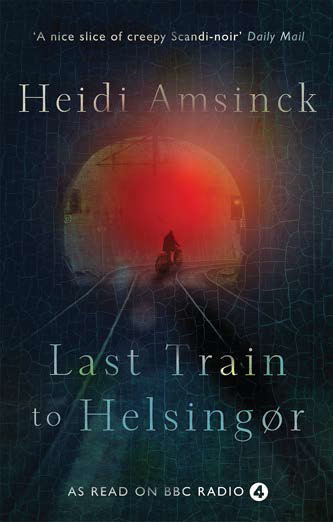
Last Train to Helsingør

Sara Blaedel

Blue Blood

Katrine Engberg
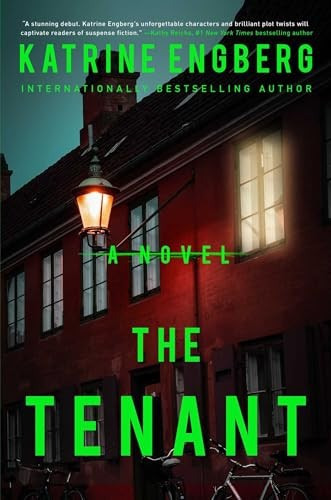
The Tenant

Lotte & Søren Hammer
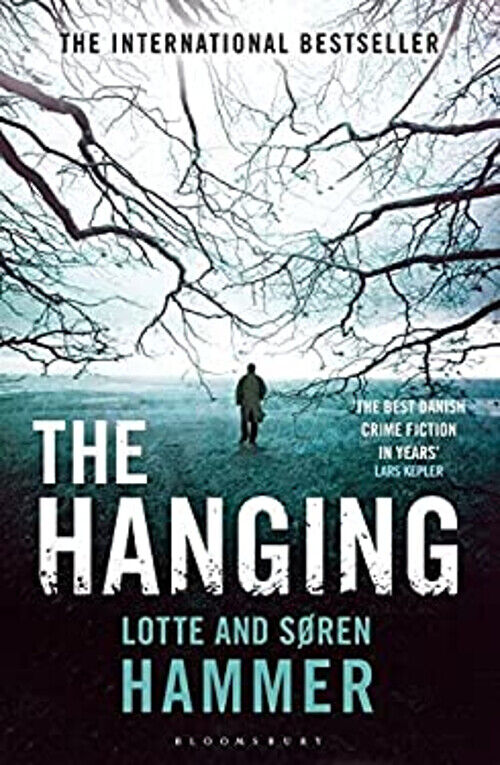
The Hanging

David Hewson

The Killing

Peter Høeg
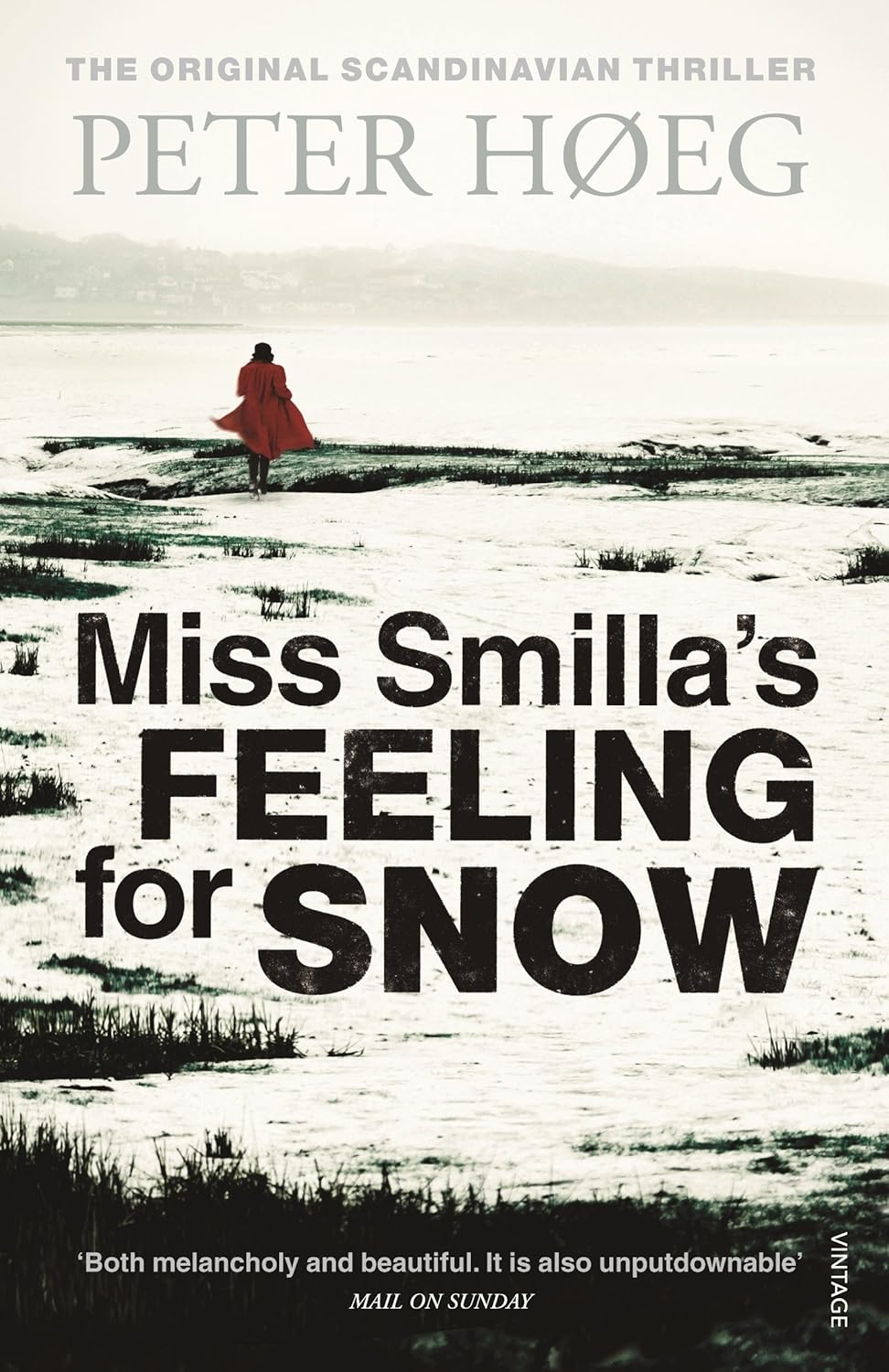
Miss Smilla’s Feeling for Snow

Thomas E. Kennedy
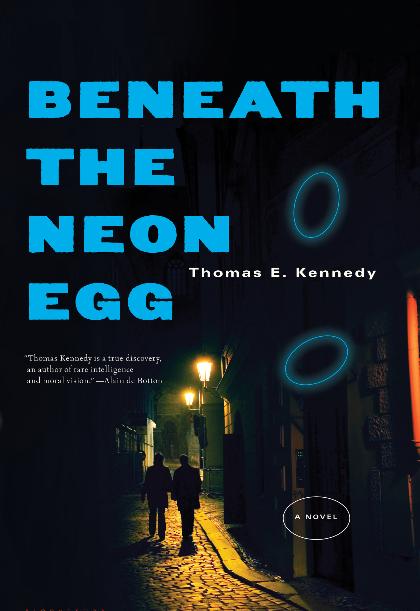
Beneath the Neon Egg


Falling Sideways


In the Company of Angels

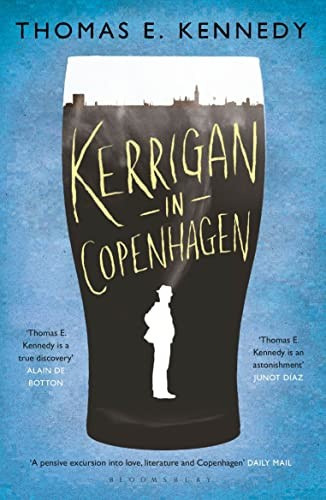
Kerrigan in Copenhagen

Lois Lowry
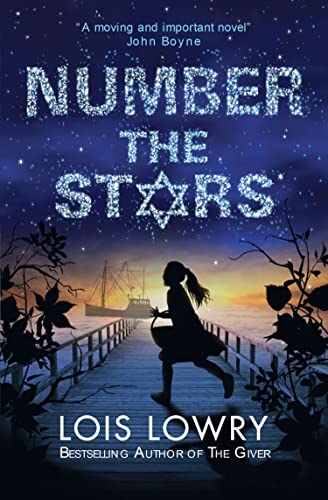
Number the Stars

Barbara Mertz
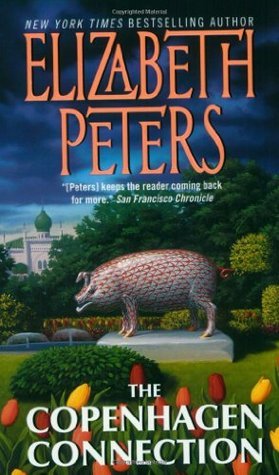
The Copenhagen Connection

Dorthe Nors

Mirror, Shoulder, Signal

Dan Turèll
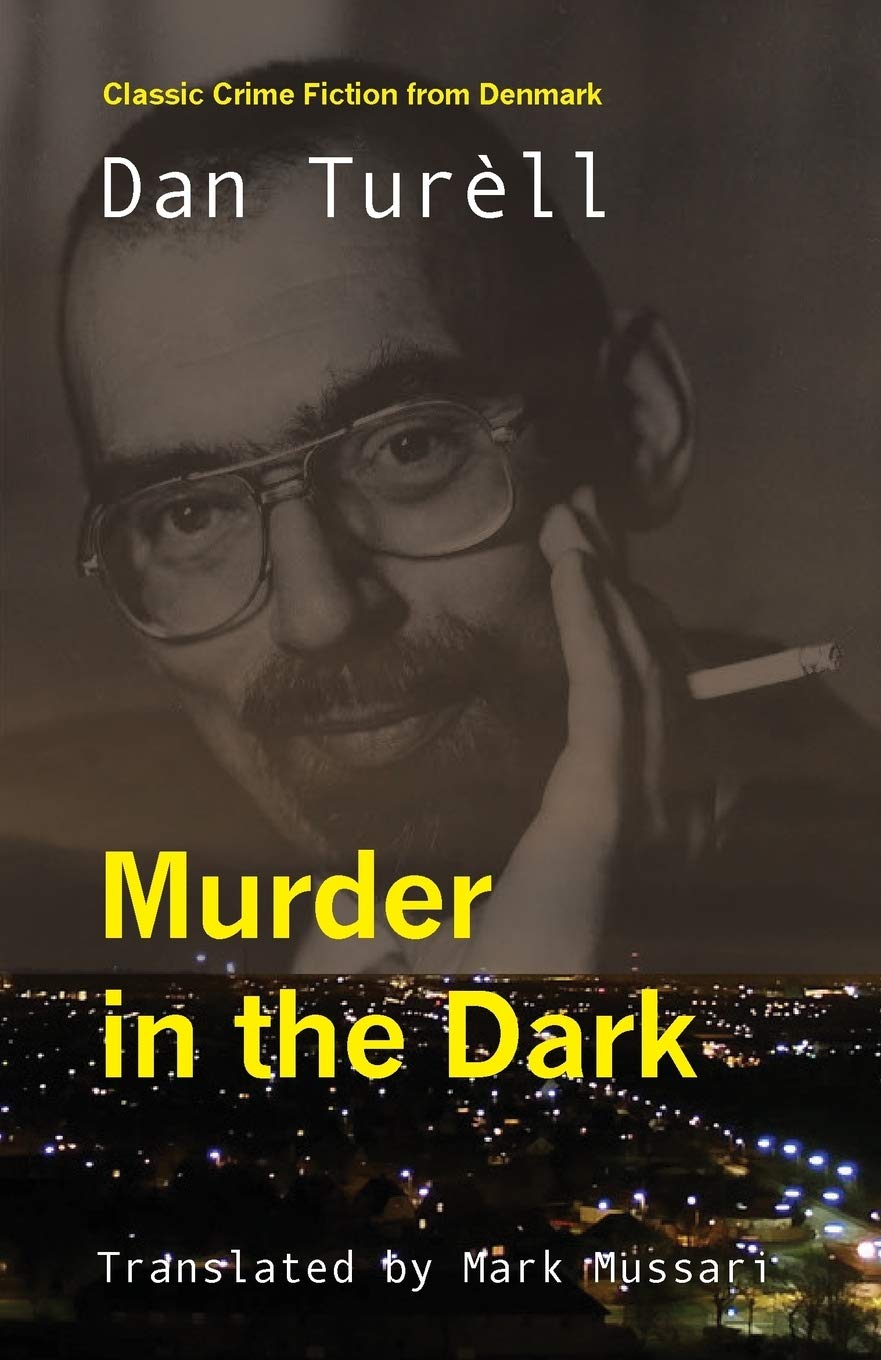
Murder in the Dark

Tove Ditlevsen
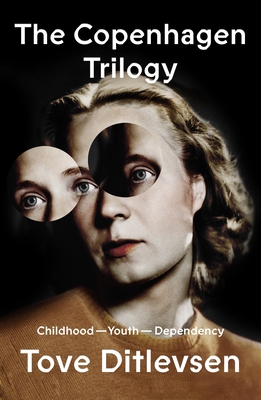
The Copenhagen Trilogy

This project is growing steadily, starting with curated reading lists and gradually expanding to include literary locations in each featured city.
The long-term goal is to read the books, visit the locations they evoke, and share reviews alongside photos and insights. At the moment, it’s a solo effort built around full-time work — so updates may take time.
If you have suggestions to contribute, or would like to share a review based on how well a book helped you explore a place through literature, feel free to get in touch here.
Copenhagen Book Reviews
Peter Høeg
Miss Smilla’s Feeling for Snow

Peter Høeg, one of Denmark’s most critically acclaimed contemporary authors, is best known for his literary thriller Miss Smilla’s Feeling for Snow, published in 1992. Born and raised in Copenhagen, Høeg brings a distinctive intellectual depth to the Scandinavian crime genre, blending suspense with philosophical exploration. Before turning to fiction in the late 1980s, Høeg led a varied career that included stints as a sailor and a ballet dancer—experiences that imbue his writing with a unique, textured perspective on both human nature and the world at large.
Miss Smilla’s Feeling for Snow, arguably Høeg’s most celebrated work, is set against the wintry, shadowed streets of Copenhagen, where the protagonist, Smilla Jaspersen, embarks on a solitary investigation into the suspicious death of a young boy. Unlike traditional crime novels, Høeg’s narrative transcends mere plot mechanics; it delves into the deeper sociocultural layers of the city, exploring themes of isolation, identity, and the clash between indigenous and Danish cultures. His portrayal of Copenhagen is at once affectionate and critical, rendering the city both familiar and enigmatic.
The novel’s success extended beyond literary acclaim; in 1997, it was adapted into a Hollywood film titled Smilla’s Sense of Snow, starring Julia Ormond and Gabriel Byrne. Høeg’s complex character studies and intricate storytelling have made him a literary sensation in Denmark, where Miss Smilla’s Feeling for Snow has become a modern classic. Internationally, the novel’s blend of suspense and introspective depth captured global audiences, leading to translations in numerous languages. Critics have lauded Høeg for his ability to weave social commentary into the fabric of a gripping narrative, securing his reputation as one of Denmark’s literary giants who continues to redefine the boundaries of Scandinavian noir.
Thomas E. Kennedy
A Copenhagen Quartet: Beneath the Neon Egg; Kerrigan in Copenhagen; Falling Sideways; In the Company of Angels

Thomas E. Kennedy, an American expatriate who made Copenhagen his home for over three decades, left a lasting literary legacy with his Copenhagen Quartet. This series of four interconnected novels—In the Company of Angels, Falling Sideways, Kerrigan in Copenhagen, and Beneath the Neon Egg—offers an intimate and layered portrayal of the city, capturing its complexities, secrets, and the quiet dramas of its inhabitants. Though Kennedy passed away in 2021, his deep affection for his adopted city lives on through this profound body of work.
The Copenhagen Quartet is structured with a subtle connection to the rhythm of music and the changing seasons, lending a thematic richness to each instalment. The novels align with the mood of different seasons: the renewal of spring in In the Company of Angels, the melancholy of autumn in Falling Sideways, the vibrant warmth of summer in Kerrigan in Copenhagen, and the stark existential chill of winter in Beneath the Neon Egg. This seasonal framework serves not only as a backdrop but also mirrors the emotional landscapes of the characters, creating a symphonic narrative that resonates with the cycles of life.
In Kerrigan in Copenhagen, the city itself becomes a living character as the protagonist, Kerrigan, meanders through its historic streets, indulging in its cafés and bars while grappling with personal grief and existential musings. Kennedy’s lyrical prose transforms Copenhagen into a city of contradictions—its charming facades juxtaposed with the loneliness of the expatriate experience. The novel serves both as a love letter to the city and a meditation on the act of wandering.

While Kennedy’s works are often lauded for their rich character studies and deeply evocative settings, they also delve into darker, more introspective themes. In the Company of Angels, set in spring, explores the journey of trauma survivors, while Beneath the Neon Egg captures the harsh existential undertones of a Copenhagen winter, reflecting the soul’s deepest struggles.
Though Kennedy’s Copenhagen Quartet has not achieved mainstream commercial success, it is celebrated for its profound exploration of human experiences set against the intricate backdrop of Copenhagen. The series captures a side of the city that is often overlooked, transforming familiar streets into spaces of introspection and revelation, ultimately offering readers a nuanced portrait of Copenhagen through the eyes of a seasoned observer.
Jussi Adler-Olsen
Mercy

Jussi Adler-Olsen has become synonymous with gripping Scandinavian crime fiction, particularly through his acclaimed Department Q series. A native of Copenhagen, Adler-Olsen has a knack for transforming the city from a charming capital into a setting filled with hidden shadows and dark secrets. His novels often centre on the disconnect between Denmark’s outward image of perfection and the cracks beneath its surface.
The first book in the series, The Keeper of Lost Causes (2007), introduces the irascible Carl Mørck, a detective relegated to the cold-case department in the basement of Copenhagen’s police headquarters. Here, Adler-Olsen masterfully uses the city’s more obscure locations—its forgotten alleys, neglected archives, and shadowy corners—as metaphors for Denmark’s hidden social ills. Mørck, together with his enigmatic assistant Assad, uncovers crimes that challenge the city’s polished exterior, exposing the injustices often ignored in the pursuit of maintaining social harmony.
Adler-Olsen’s background in political science and publishing informs his incisive approach to storytelling, allowing him to weave critiques of institutional failures into the narrative without sacrificing suspense. His characters are not just detectives but vehicles for exploring themes of complacency and the costs of societal neglect. This layered approach has won him a loyal readership, particularly in Denmark, where the Department Q series is seen as both thrilling and thought-provoking.
While some readers may be drawn to the fast-paced plots and psychological tension, others find depth in Adler-Olsen’s unflinching examination of Copenhagen’s social fabric. The series has also found success on screen, with film adaptations capturing the raw intensity of his books. By focusing on the overlooked and the marginalised, Adler-Olsen has crafted a literary portrait of Copenhagen that is as compelling as it is unsettling.
Hans Christian Andersen
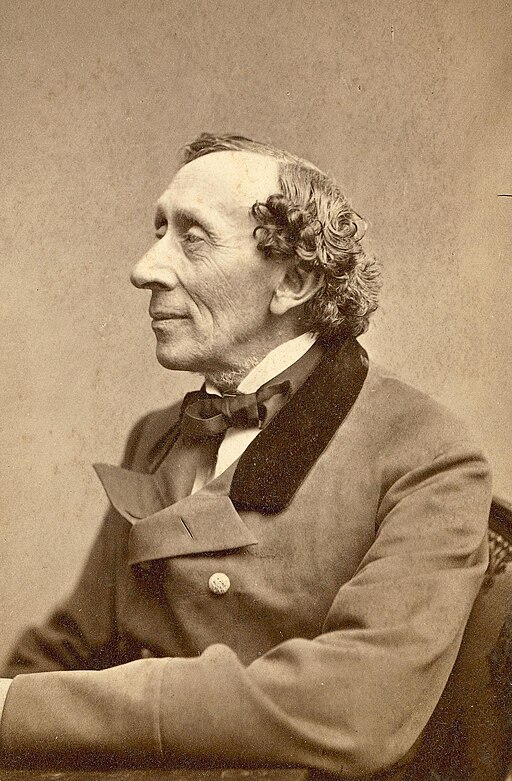
Though Andersen travelled widely and was born in Odense, he spent much of his life in Copenhagen, where he wrote some of his most famous works, including The Little Mermaid, The Ugly Duckling, and The Emperor’s New Clothes. Andersen’s fairy tales have become timeless, with his works translated into numerous languages and integrated into global folklore. His connection to Copenhagen is celebrated throughout the city, with statues, museums, and cultural events honouring his legacy.
Søren Kierkegaard
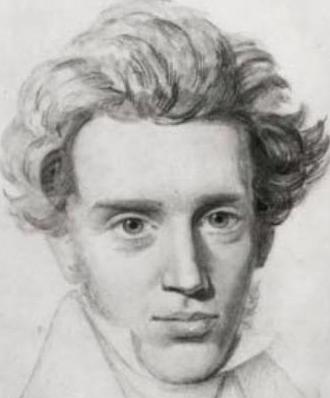
Though primarily known as a philosopher, Kierkegaard’s influence on literature cannot be overstated. His works, including Fear and Trembling and Either/Or, blend existential themes with literary forms and have deeply influenced modern philosophy and literature. Kierkegaard spent most of his life in Copenhagen, and his reflections on the city’s streets and society permeate his writings. His work has influenced generations of writers and thinkers, making him a central figure in Danish literary history.
Sara Blædel

Sara Blædel, a native Copenhagener, has emerged as one of Denmark’s most influential voices in crime fiction, deftly navigating the shadows of her beloved city. Blædel’s career, intriguingly, began not with writing but with founding Denmark’s first crime fiction publishing house—a venture that speaks to her lifelong fascination with the genre. Her breakthrough novel, The Midnight Witness, introduces Detective Louise Rick, whose investigation unfolds against the moody, rain-slicked backdrop of Copenhagen’s streets and hidden alleys.
Far from simply using the city as a picturesque setting, Blædel imbues Copenhagen with a sense of unease that reflects her characters’ inner turmoil. The novel explores the undercurrents of the city, transforming its cobblestone streets into a labyrinth of secrets. In Denmark, Blædel’s portrayal of strong, nuanced female protagonists has struck a chord, securing her place atop bestseller lists and making her a household name. Critics have praised her ability to blend social critique with tightly woven plots, while international readers appreciate the authenticity she brings to the Scandinavian noir tradition.
Blædel’s novels have been translated into over 30 languages, yet her deepest connection remains with the city that shapes her narratives—a city she captures with both affection and an unflinching gaze.
Karen Blixen

Known internationally under her pen name, Isak Dinesen, Blixen gained fame for works like Out of Africa and Seven Gothic Tales. She was born just outside Copenhagen and returned to Denmark later in life after living in Kenya. Blixen’s sophisticated prose and explorations of existential themes have cemented her as one of Denmark’s literary icons, and she is often associated with Copenhagen’s intellectual and artistic circles.
Copenhagen Bookish place to visit
The Royal Library (Det Kongelige Bibliotek)
Søren Kierkegaards Pl. 1
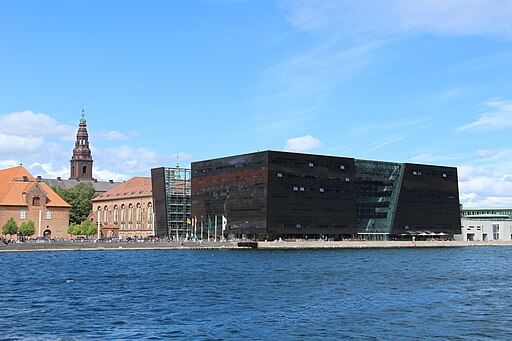
Begin your literary exploration of Copenhagen at Denmark’s national library, famously known as the “Black Diamond” for its strikingly modern architectural design. As you step inside, you’re greeted with a serene space that seamlessly blends contemporary aesthetics with scholarly tradition. The library houses a remarkable collection of rare manuscripts and treasured works by Danish literary icons such as Søren Kierkegaard and Hans Christian Andersen. For book lovers, this is not merely a repository of knowledge but a gateway into Denmark’s literary heritage. The tranquil reading rooms, with views overlooking the harbour, create a perfect retreat for those seeking a quiet space to immerse themselves in literature.
Hans Christian Andersen
Nyhavn 20
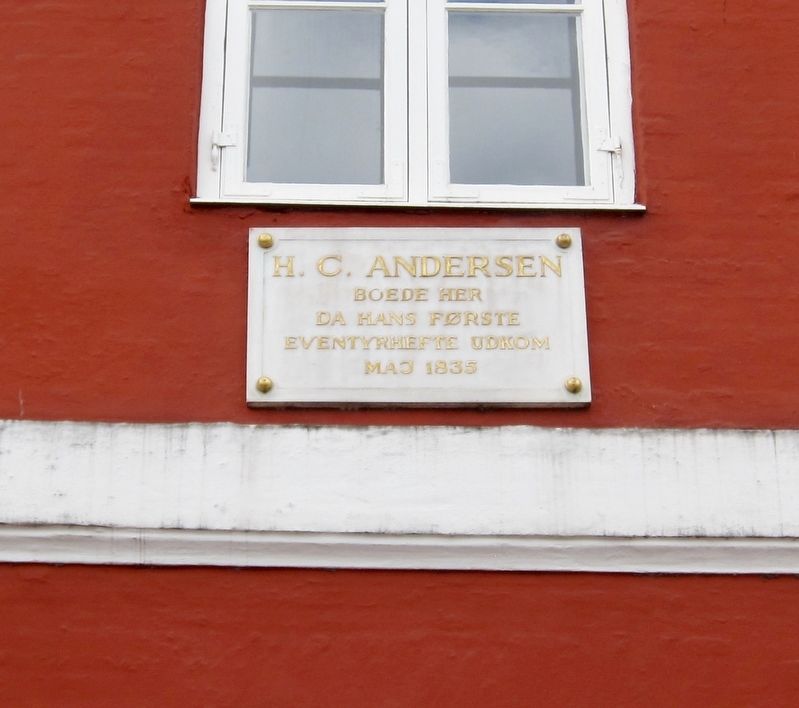
Strolling along the colourful, cobblestone streets of Nyhavn, you’ll find yourself transported back to the 19th century, when Hans Christian Andersen resided here. At numbers 20 and 67, plaques commemorate the buildings where the beloved author lived and penned many of his fairy tales. The picturesque canal, lined with historic ships, cafés, and vibrant facades, captures the spirit of old Copenhagen that inspired Andersen’s timeless stories. Nyhavn’s lively yet nostalgic atmosphere offers a unique glimpse into the world that shaped one of literature’s most enduring storytellers.
Nyhavn 67
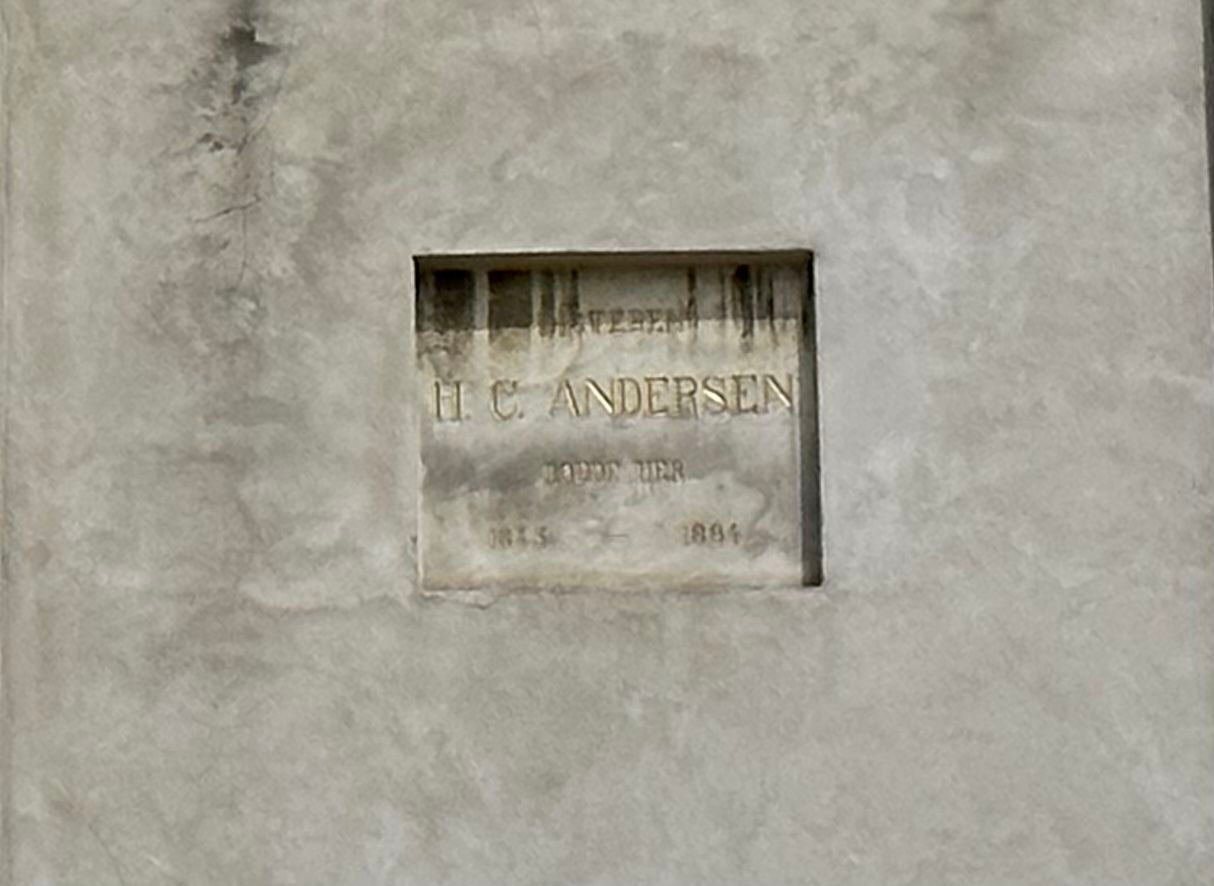
H. C. Andersen Boede her Da hans første eventyrhefte udkom Maj 1835
Hans Christian Andersen lived here, when his first set of fairy tales were published in May, 1835.
Tordenskjoldsgade 17
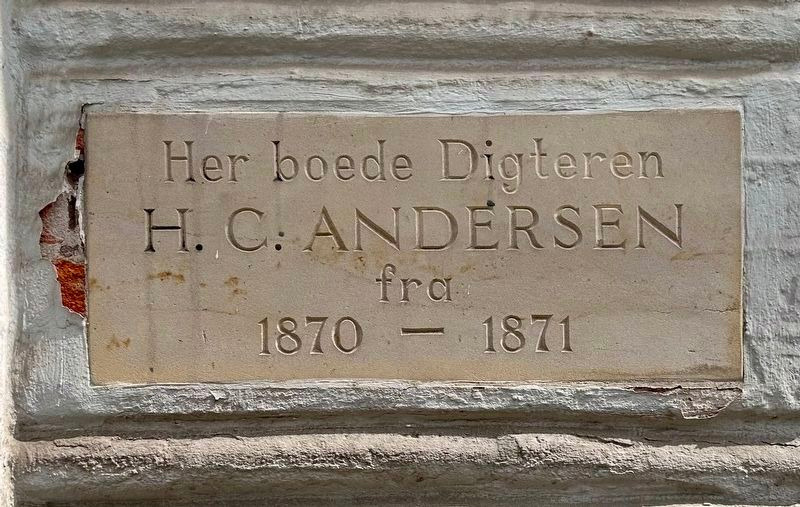
Her boede Digteren H.C. Andersen fra 1870-1871
The Poet H.C. Andersen lived here from 1870 to 1871.
For a full chronology of HCA’s living quarters see: The Hans Christian Andersen Centre
Tranquebar Bookshop & Café
Borgergade 14
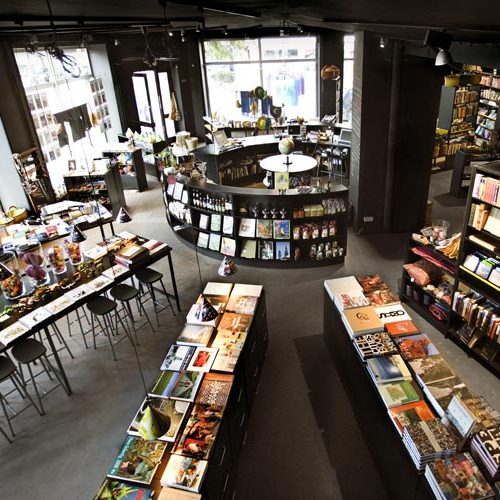
Hidden away on Borgergade 14, Tranquebar is an independent bookstore that exudes the spirit of Copenhagen’s thriving literary scene. Specialising in world literature, with a well-curated selection of Danish classics, it’s the perfect spot to pause and unwind. Grab a coffee, browse through its shelves, and lose yourself in the words of Danish authors or discover new international voices. The relaxed atmosphere invites you to linger, making it an ideal escape for literary aficionados.
The Karen Blixen Museum
Rungsted Strandvej 111, 2960
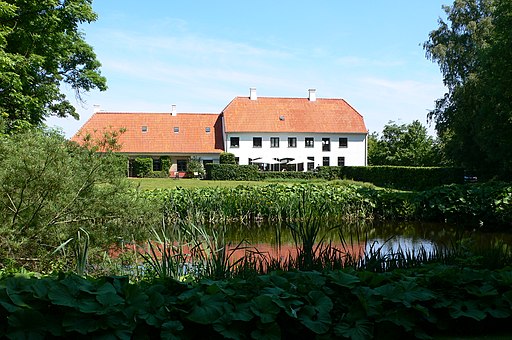
Located just under an hour (by public transport) outside Copenhagen in Rungstedlund, the Karen Blixen Museum offers a deep dive into the life of one of Denmark’s literary legends. Set in the author’s former home, where she penned masterpieces like Out of Africa, the museum is surrounded by lush gardens and views of the Øresund Strait. It’s more than just a museum; it’s a journey into Blixen’s world, where her evocative storytelling comes alive. For fans of her work, this is an unmissable stop that provides insight into her creative mind and personal life.
Assistens Cemetery
Kapelvej 2
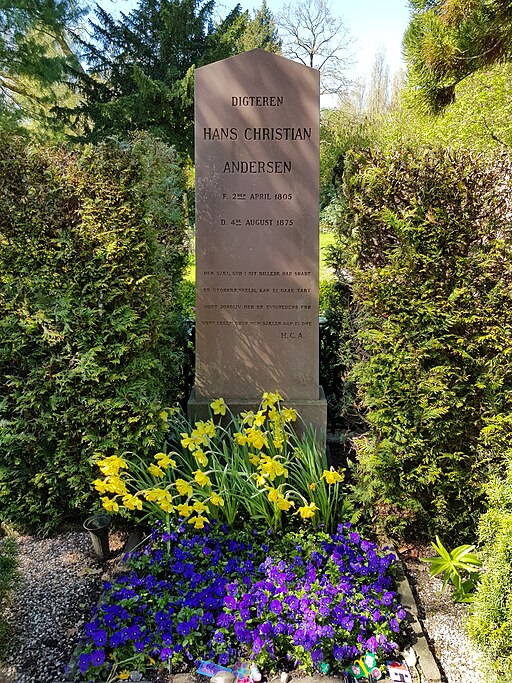
In the heart of Nørrebro at Kapelvej 4 lies Assistens Cemetery, a peaceful resting place for some of Denmark’s greatest literary figures. As you walk among the graves, you’ll find the final resting places of Søren Kierkegaard, Hans Christian Andersen, and other notable intellectuals. The cemetery offers a tranquil space for reflection, serving as a poignant conclusion to your literary journey through Copenhagen. Here, among the trees and weathered stones, the legacy of Denmark’s literary giants endures in quiet reverence.
Søren Kierkegaard
Plaque at Nytorv 2
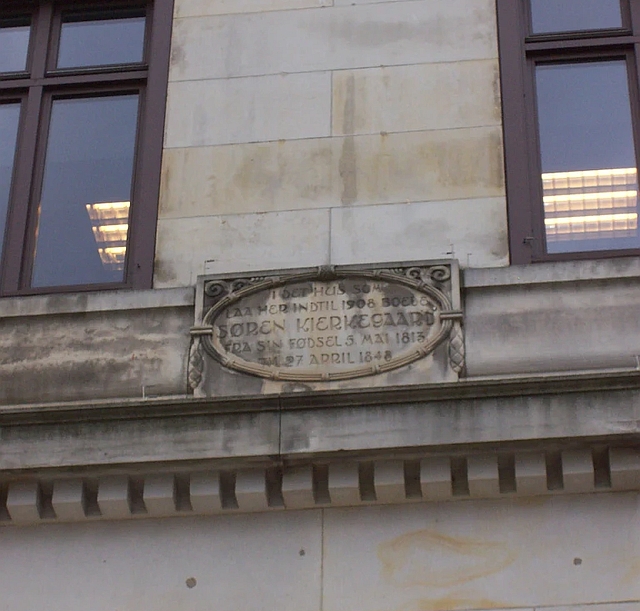
Søren Kierkegaard was born on 5 May 1813 in his family’s residence on the first floor of Nytorv 2. A memorial plaque now marks the building.
In 1837, Kierkegaard moved to Løvstræde 7 , near his former school, before returning to Nytorv 2, where he lived again between 1844 and 1848.
Søren Kierkegaard was born on 5 May 1813 in his family’s residence on the first floor of Nytorv 2. A memorial plaque now marks the building.
In 1837, Kierkegaard moved to Løvstræde 7 , near his former school, before returning to Nytorv 2, where he lived again between 1844 and 1848.
Søren Kierkegaard was born on 5 May 1813 in his family’s residence on the first floor of Nytorv 2. A memorial plaque now marks the building.
In 1837, Kierkegaard moved to Løvstræde 7 , near his former school, before returning to Nytorv 2, where he lived again between 1844 and 1848.
School of Civic Virtue – Klareboderne 3

“I denne bygning har Søren Kierkegaard haft sin daglige gang som elev i Borgerdydskolen 1821–30”.
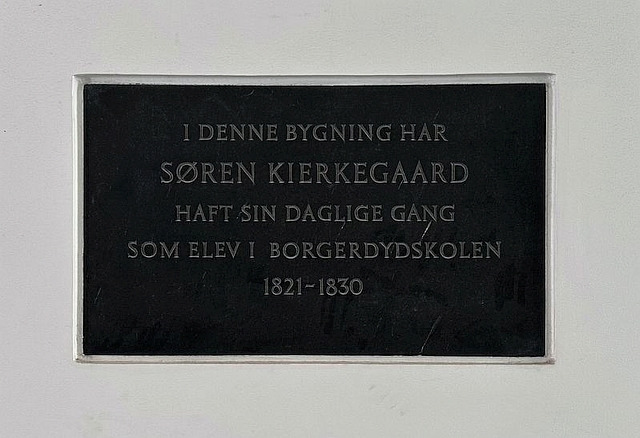
Next door stands Gyldendals, the historic Danish publishing house.
Kierkegaard apartment 1848-1850 – Rosenborggade 7
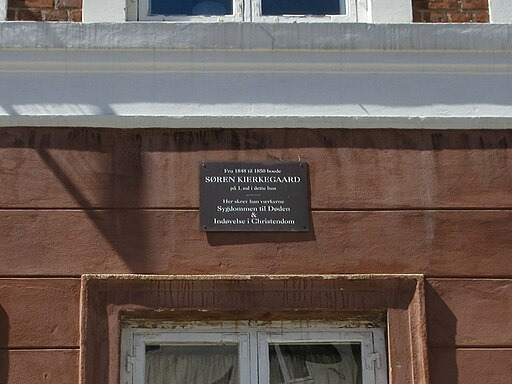
In 1848, he moved from his spacious apartment at Rosenborggade 9 to an even larger one nearby, where he resided for two years.
Frederiksberg Hospital- Bredgade 68

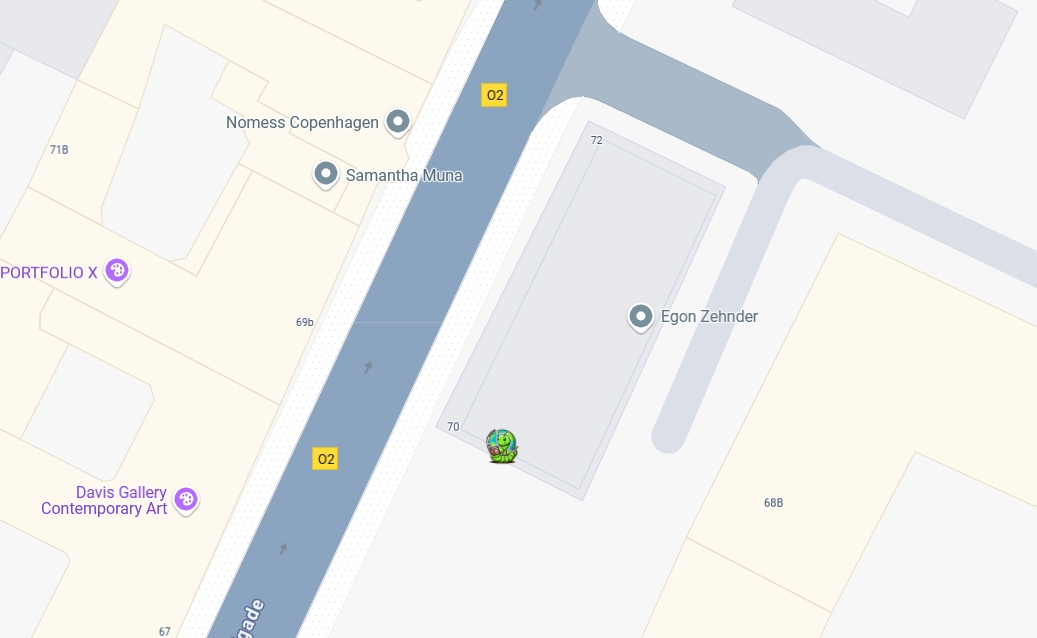
Kierkegaard’s grave – Assistens Cemetery
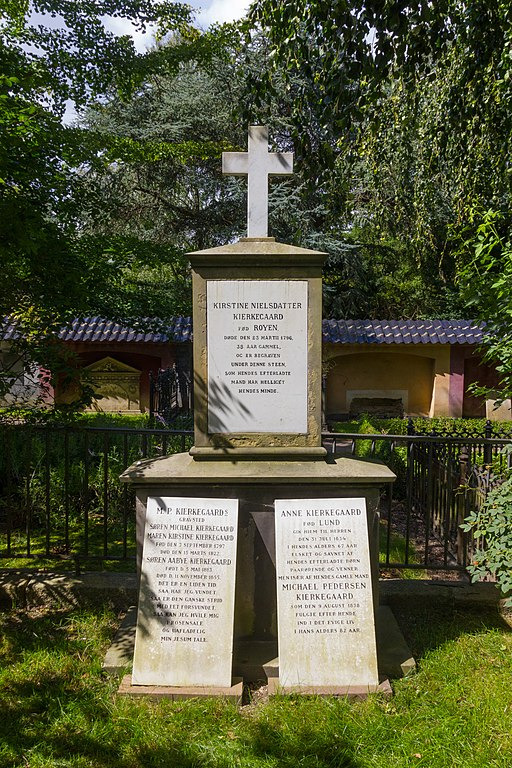
He was interred in the Assistens cemetry.
Statue in the Library Garden
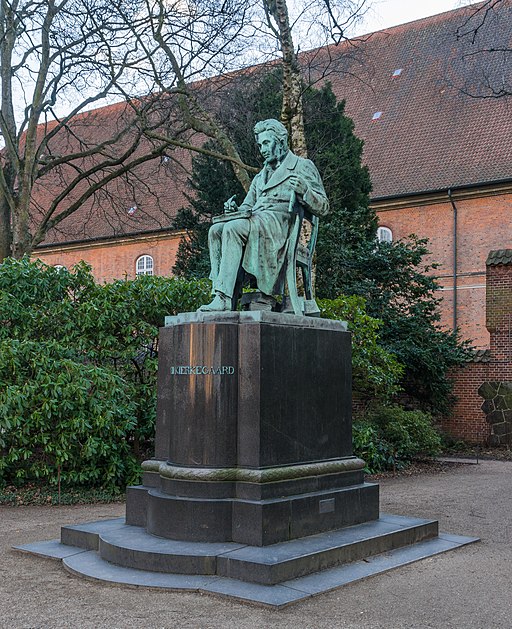
A statue of Kierkegaard, created by Louis Hasselriis and unveiled in 1918, stands in the Royal Library Garden on Slotsholmen.
In his final years, Kierkegaard’s frequent appearances at the Athenæum Society reading rooms became acts of public protest. As his critique of the People’s Church of Denmark intensified, he transformed the library into a performative space of resistance, embodying the existential challenge he posed in his writings.
A statue of Kierkegaard, created by Louis Hasselriis and unveiled in 1918, stands in the Royal Library Garden on Slotsholmen.
In his final years, Kierkegaard’s frequent appearances at the Athenæum Society reading rooms became acts of public protest. As his critique of the People’s Church of Denmark intensified, he transformed the library into a performative space of resistance, embodying the existential challenge he posed in his writings.
A statue of Kierkegaard, created by Louis Hasselriis and unveiled in 1918, stands in the Royal Library Garden on Slotsholmen.
In his final years, Kierkegaard’s frequent appearances at the Athenæum Society reading rooms became acts of public protest. As his critique of the People’s Church of Denmark intensified, he transformed the library into a performative space of resistance, embodying the existential challenge he posed in his writings.
Statue at Frederiks Kirke – Frederik’s Church
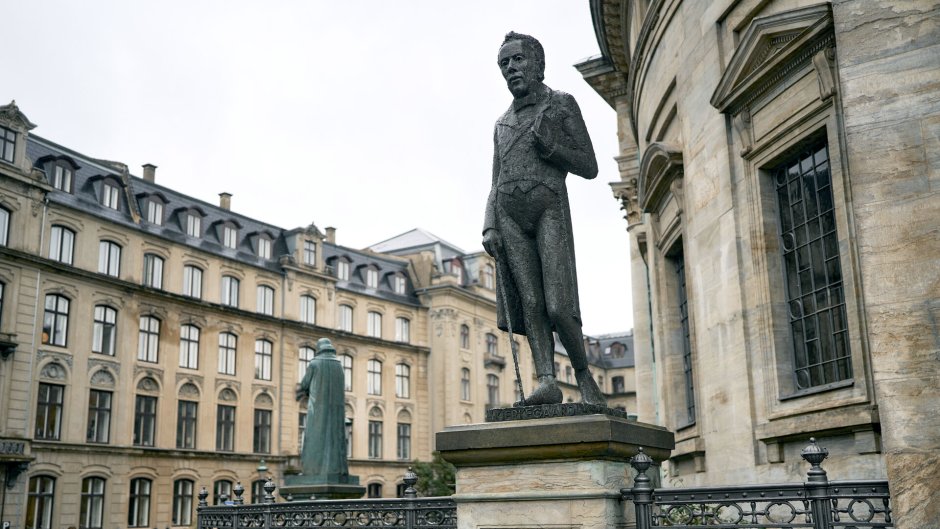
Surrounding the Marble Church there are 14 statues including a statue depicting Søren Kierkegaard on one of his strolls through the city. The statue was made by Knud Nellemose and unveiled in 1973.
